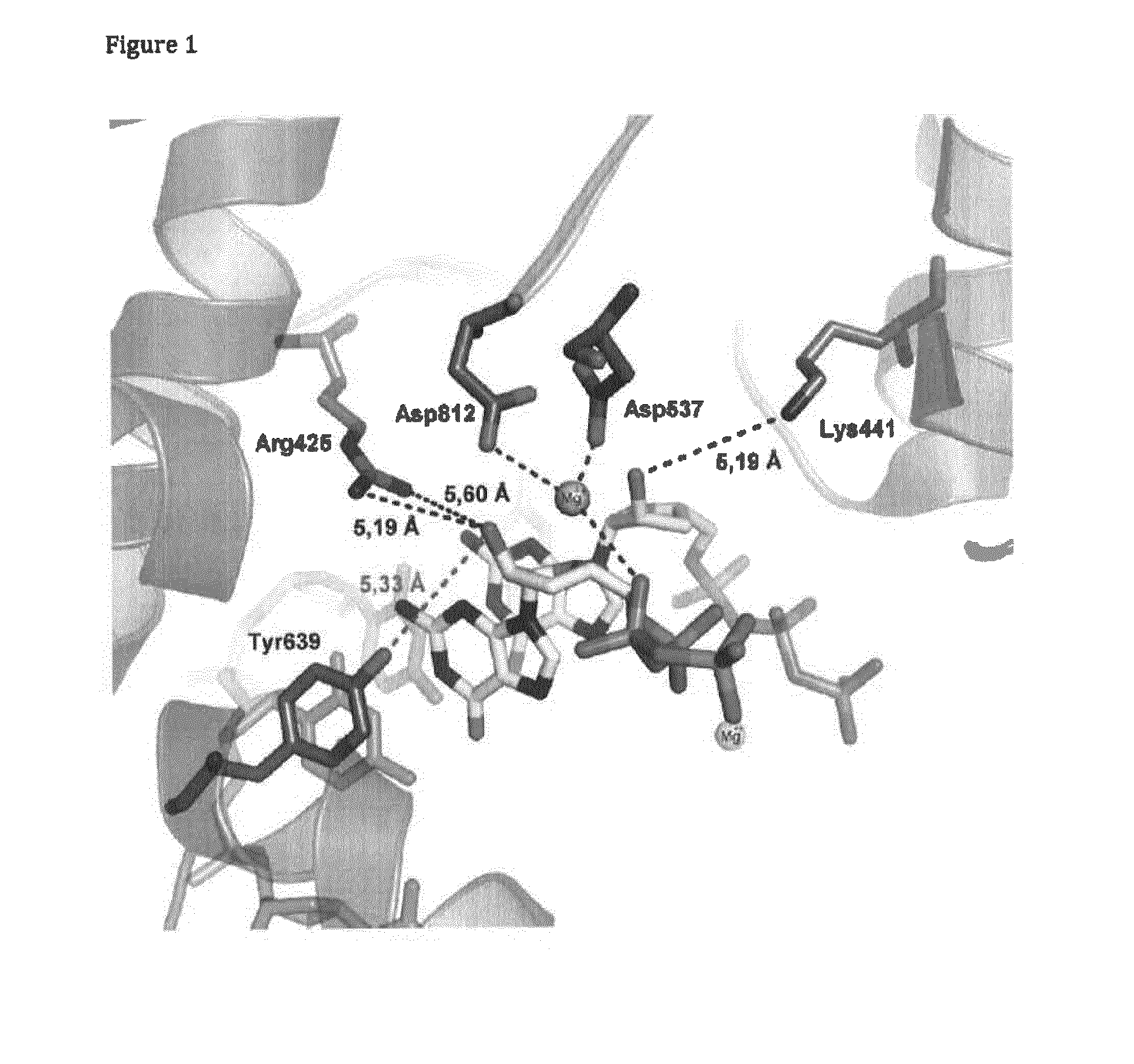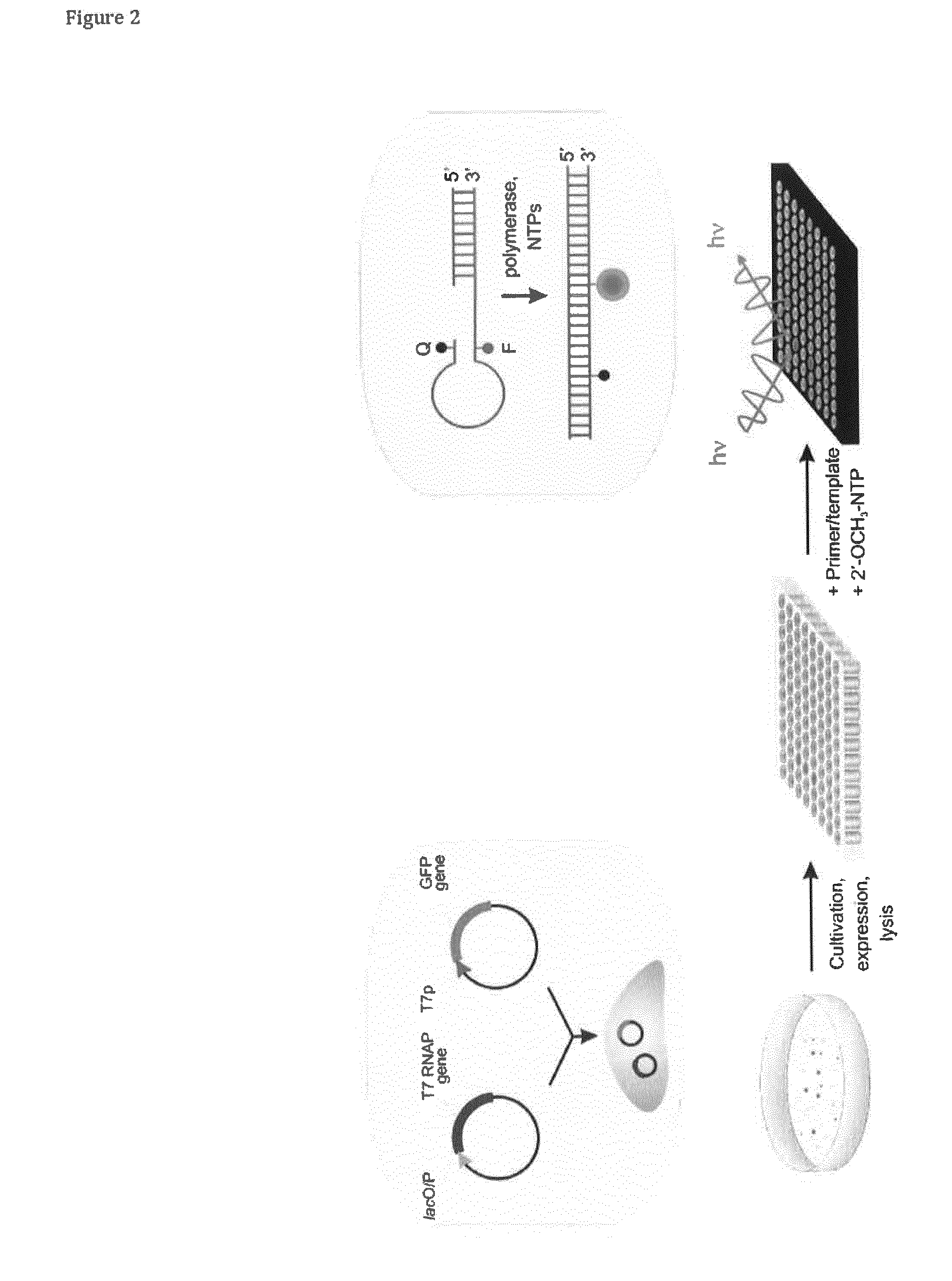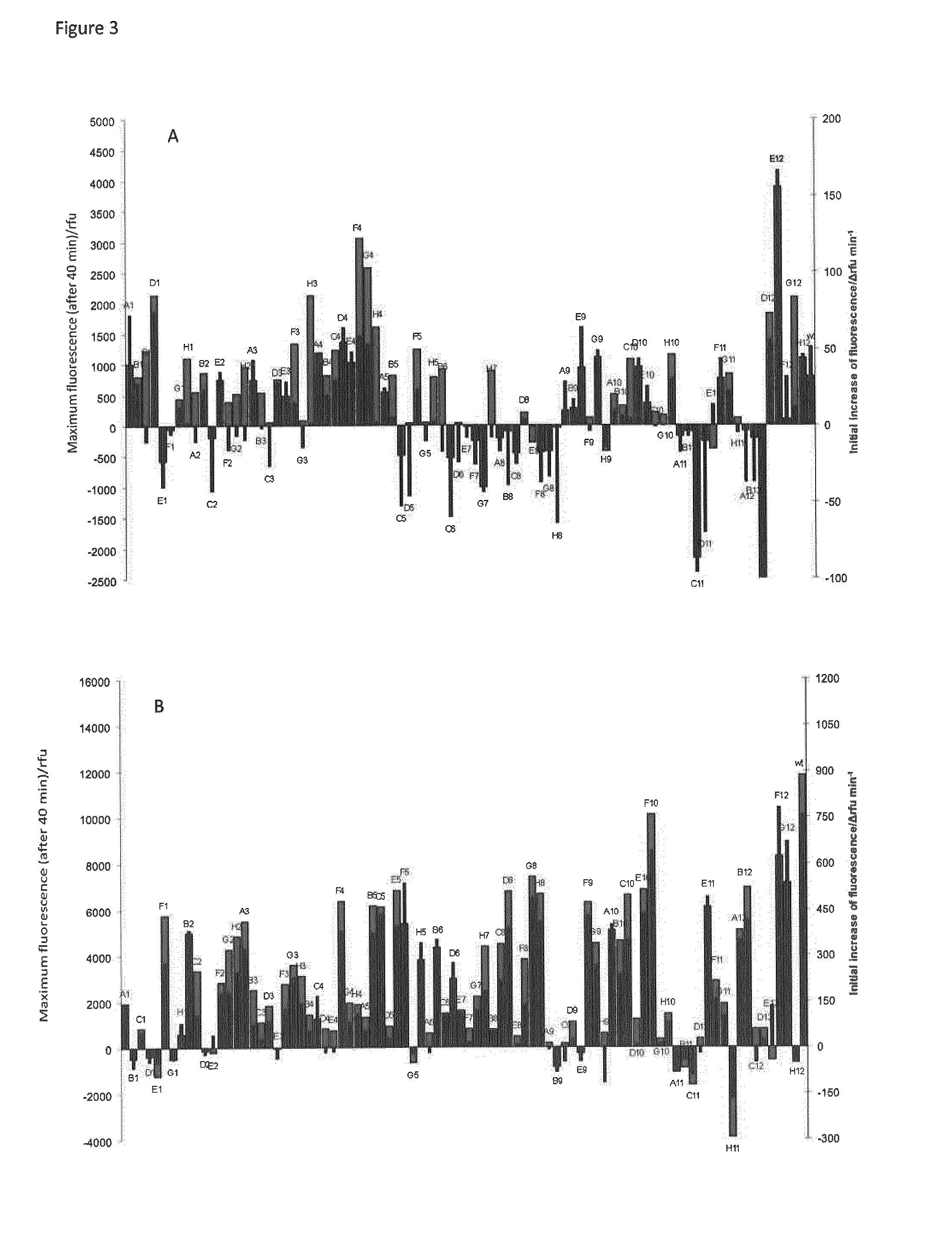T7 RNA polymerase variants and methods of using the same
a polymerase and variant technology, applied in the field of molecular biology, can solve the problems of poor stability in vivo, inability to amplify during pcr while, and the use of rna molecules, and achieve the effect of increasing efficiency
- Summary
- Abstract
- Description
- Claims
- Application Information
AI Technical Summary
Benefits of technology
Problems solved by technology
Method used
Image
Examples
example 1
Generation of 7 RNAP Mutant Libraries by Saturation Mutagenesis
[0090]Site-specific saturation mutagenesis was performed using QuikChange® site-directed mutagenesis kit (Stratagene) according to the manufacturer's protocols. Mutagenesis started from plasmid pUCT7I using the primers given in Table 1. The resulting plasmid libraries were used to transform XL1-Blue cells that were plated on LB media (10 g / L tryptone, 5 g / L yeast extract, 10 g / L NaCl, and 15 g / L agar) containing ampicillin (100 μg / mL) and cultivated over night at 37° C. Colonies were pooled and directly submitted to plasmid preparation using the QIAprep Spin Miniprep Kit (Qiagen) yielding the mutant libraries pUCT7-R425X or pUCT7-K441X, respectively.
TABLE 1VariantPrimer sequenceR425XForward: 5′-CAACATGGACTGGCGCGGTNNBGTTTACGCTGTGTCAATG-3′(SEQ ID NO: 11)Reverse: 5′-CATTGACACAGCGTAAACVNNACCGCGCCAGTCCATGTTG-3′(SEQ ID NO: 12)K441XForward: 5′-GCAAGGTAACGATATGACCNNSGGACTGCTTACGCTGGC-3′(SEQ ID NO: 13)Reverse 5′-CGCCAGCGTAAGCAGTC...
example 2
Selection of Active T7 RNAP Variants
[0091]Competent BLR / pAlterGC cells were transformed with one of the mutant libraries (pUCT7-R425X, or pUCT7-K441X), subsequently plated on LB media containing ampicillin (100 μg / mL) and chloramphenicol (34 μg / mL) and cultivated at 37° C. (24 h), followed by incubation at 20° C. (12-48 h). Transformants expressing active variants of T7 RNAP appeared as green fluorescent colonies after this period of time while transformants expressing inactive T7 RNAP remained white (FIG. 2). Green colonies were selected and used for activity-based screening. This selection step yielded approx. 10% (K441X) or 5% (R425X) generally active variants (transformation efficiencies: 108 cfu / μg DNA).
example 3
Expression of T7 RNAP and Preparation of Cell Lysates in Microplates
[0092]Expression.
[0093]Transformants expressing active T7 RNAP variants were cultivated in a 96-well-microplate format. Fresh, green colonies of BLR / pAlterGC / pUCT7I (or, variant) were used to inoculate 1 mL of YT medium (8 g / L tryptone, 5 g / L yeast extract, 5 g / L NaCl, pH 7.0) supplemented with appropriate antibiotics. After sealing the plates with Air Pore Tape sheets (Qiagen), the cultures were shaken for 19 h at 37° C. and 220 rpm. These overnight cultures were diluted 50-fold into fresh medium (1.5 mL / well) and grown until the optical density at 600 nm reached 0.7-0.9 (spot-checked). Protein expression was induced by the addition of IPTG (final concentration: 1 mM), and incubation was continued over night. Cells were harvested by centrifugation (3,700 rpm, 5 min, 4° C.; microplate buckets; centrifuge 5804R, Eppendorf, Hamburg, Germany), freed from supernatant and stored at −20° C. until used.
[0094]Lysis.
[0095]Ce...
PUM
| Property | Measurement | Unit |
|---|---|---|
| temperature | aaaaa | aaaaa |
| pH | aaaaa | aaaaa |
| pH | aaaaa | aaaaa |
Abstract
Description
Claims
Application Information
 Login to View More
Login to View More - R&D
- Intellectual Property
- Life Sciences
- Materials
- Tech Scout
- Unparalleled Data Quality
- Higher Quality Content
- 60% Fewer Hallucinations
Browse by: Latest US Patents, China's latest patents, Technical Efficacy Thesaurus, Application Domain, Technology Topic, Popular Technical Reports.
© 2025 PatSnap. All rights reserved.Legal|Privacy policy|Modern Slavery Act Transparency Statement|Sitemap|About US| Contact US: help@patsnap.com



